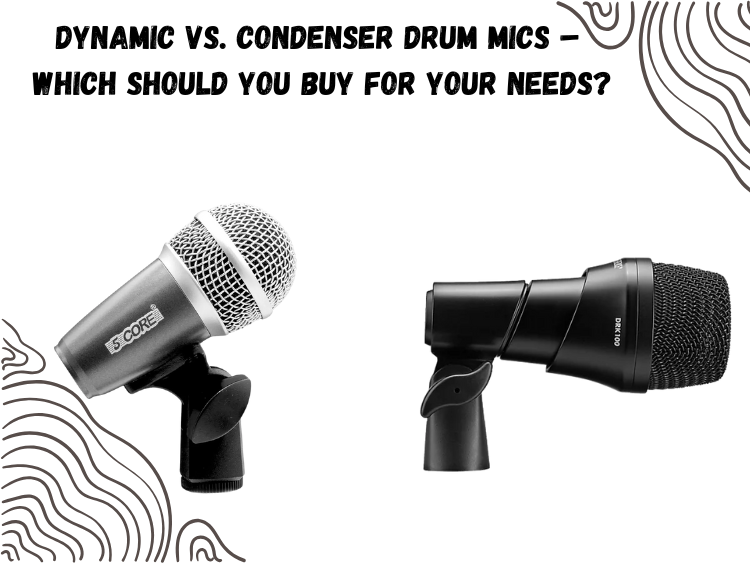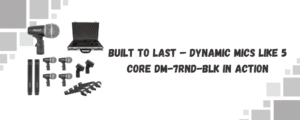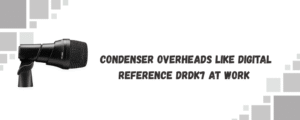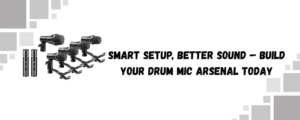Ask any drummer who’s recorded their kit even once: the wrong mics will flatten your sound, kill your energy, and turn a great performance into a lifeless mix. And no, it’s not about buying the most expensive gear—it’s about knowing how to use the right tool in the right place. That’s where the dynamic vs. condenser mic debate starts, especially when drums are involved.
Each mic type brings something different to the table. One’s built for punch, the other for detail. The trick is knowing what goes where, and more importantly, why.
Let’s get into the thick of it.
Dynamic Mics: Tough, Focused, and Forgiving
Dynamic microphones are the workhorses of drum recording. They’re designed to handle high sound pressure levels, which makes them perfect for loud sources like snare drums, toms, and kick drums. You can throw them in front of a 22” kick head or a floor tom without worrying about distortion or damage.
They don’t just survive harsh conditions—they thrive in them. That’s why dynamic mics show up everywhere from club stages to pro studios. They’re less sensitive, which might sound like a drawback, but in noisy environments or live setups, it’s actually a huge win. Less bleed, fewer phase issues, and tighter isolation.
Most importantly, they shape your sound in a musically useful way. A great dynamic mic won’t just record your snare—it’ll make it sound like your snare. Present, punchy, and loud without being harsh.
The 5 Core DM-7RND-BLK is a good example. You get dedicated dynamic mics for the entire kit—kick, snare, toms—all built to take a beating and still deliver clean, usable tracks every time. Whether you’re recording or playing live, you won’t need to baby these.
Condenser Mics: Detail, Air, and Space
Condenser microphones are the exact opposite in many ways. They’re more sensitive, more accurate, and way more revealing. If something sounds off in your room or tuning, a condenser mic will pick it up—and broadcast it to the world. That’s not a flaw, just a fact. They’re designed to capture subtlety and nuance.
That’s why they’re the go-to choice for overheads, cymbals, and room miking. A pair of small-diaphragm condensers placed above the kit can capture the full stereo image—crashes, rides, ghost notes on the snare, even the natural decay of the room itself.
They’re not as rugged as dynamic mics, and they don’t like being shoved right up against loud sources like a kick or snare. But when used properly, they add the kind of high-end clarity that brings your drum mix to life. Think shimmer. Think air. Think space.
You’ll find decent condenser pairs in kits like the Behringer BC1200 or even bundled in larger mic packs like the Digital Reference DRDK7. But if you’re building a setup yourself, start with dynamics and bring in a clean pair of condensers for overheads when your budget allows. It’s a move you won’t regret.
So Which One Should You Use? Depends on the Job
Here’s where things get practical. You don’t choose a mic type based on brand hype or what your favorite drummer uses. You choose based on placement, context, and the sound you want. Let’s break it down:
- Kick Drum: Always dynamic. Period. You need something that can take the hit and still give you that low-end punch. Condensers just aren’t built for that kind of pressure.
- Snare & Toms: Mostly dynamic. The attack, body, and snap you want are best captured with a solid dynamic mic. Plus, less bleed from cymbals helps you keep your mix clean.
- Cymbals & Overheads: This is where condensers shine. Their high-frequency response gives your mix that polished sheen and stereo depth. You want clarity, not mud.
- Room Mics: Condensers again. A pair of well-placed room mics can glue your entire kit together and add natural ambiance that even the best reverb plugins can’t fake.
Live vs. Studio: Same Mics, Different Priorities
Context changes everything. In a live environment, bleed control and durability matter more than ultra-high fidelity. That’s why most live drum setups stick with dynamic mics all around—snare, toms, kick, even the hi-hat sometimes. It’s about control and reliability.
In the studio, you have more freedom. You’re not fighting stage volume or feedback. That means you can blend mic types to build a more complete drum sound. Use dynamics for the up-close punch. Add condensers for the polish and air. The combination is what gives studio recordings that layered, full-bodied feel.
Final Take: Stop Chasing “Best”—Start Building Smart
There’s no universal “best mic for drums.” There’s only the best mic for the job at hand.
If you’re just starting out, lean into dynamic mics. They’re versatile, forgiving, and built to last. As you grow, add a pair of condensers to your setup for overheads and room miking. That’s the most practical path forward—function first, not flash.
Drum mic kits like the 5 Core DM-9RND-BLK get you most of the way there right out of the box. Add in a couple of condensers when you can, and you’re covered for both live and studio use.
Stop stressing about mic types. Know what each one does well, place them right, and let your drums speak for themselves.




